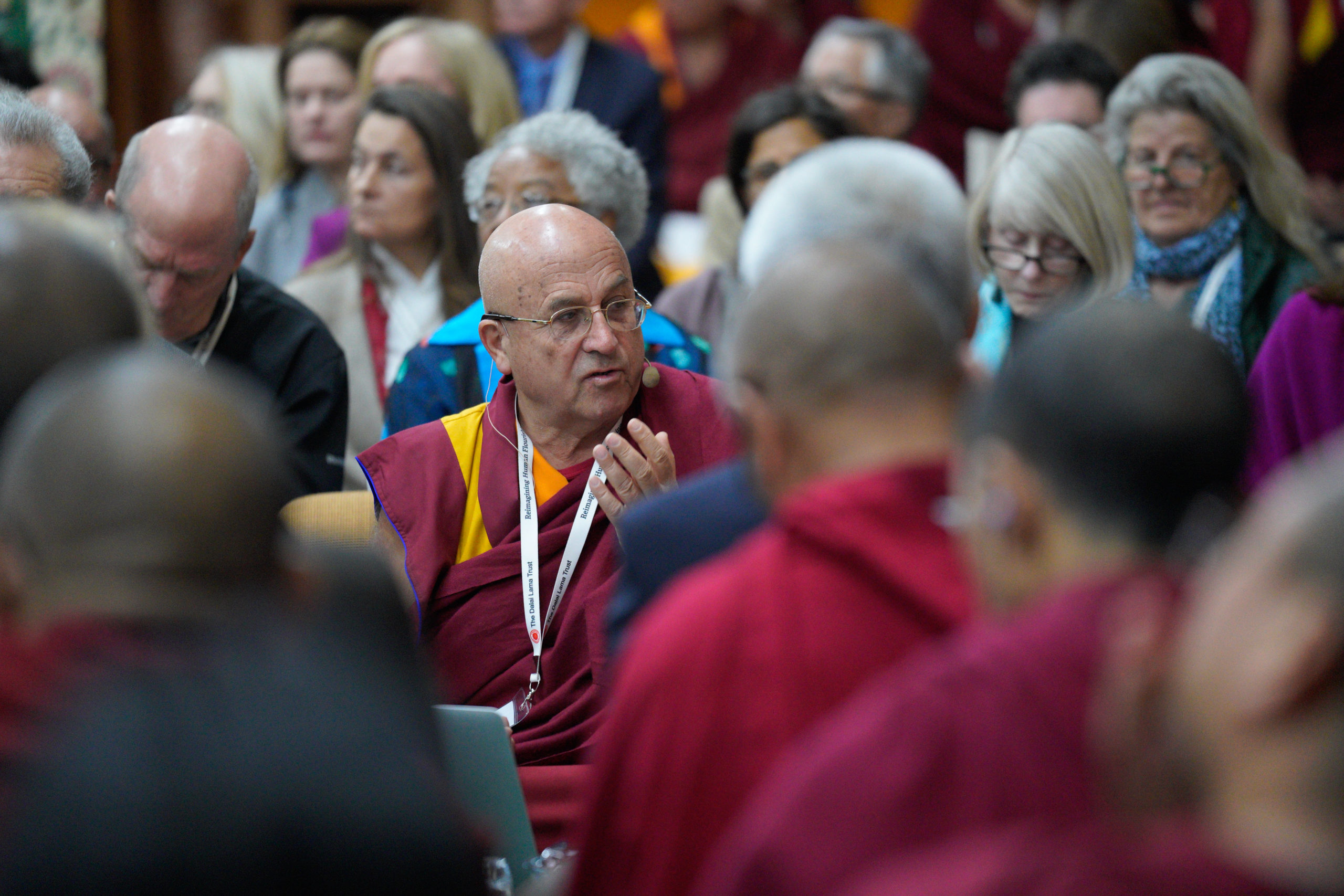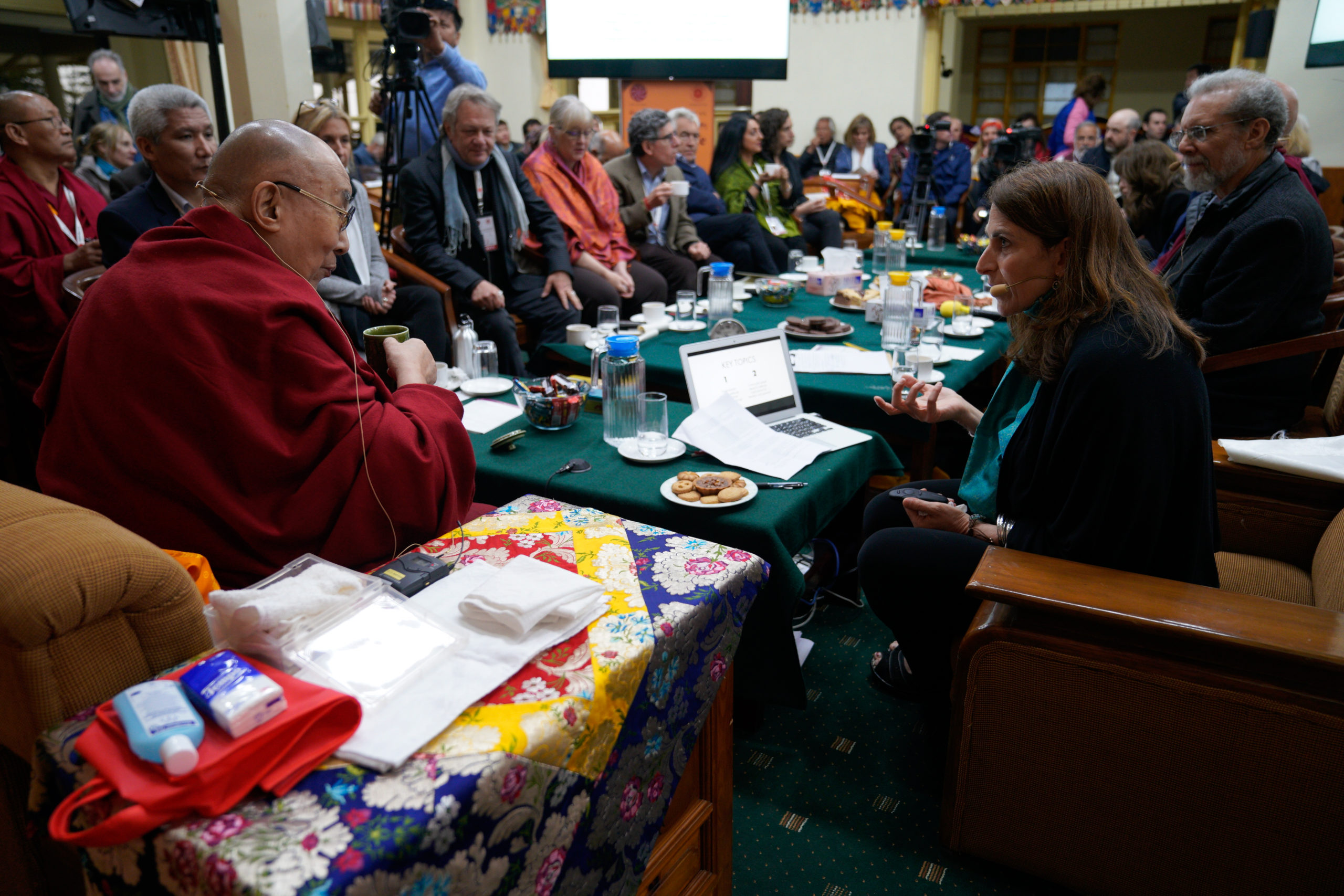What is the role of compassion in education? Knowing the difference between right and wrong offers no guarantee that an individual will act morally, affirmed both scientific and contemplative presenters at the Dialogue.
This is why it’s important to understand the roots of compassionate behavior and how such behavior can be developed and embodied—among students, parents, educators, and society at-large. There is a need to cultivate both the skills of moral reasoning alongside the disposition to care and act with compassion, emphasized presenters.
Compassion Rooted in Self-Interest
Some people think that having an ethical view primarily means being able to reason morally about right and wrong, but moral reasoning alone isn’t sufficient for an ethical life, affirmed Buddhist monk Venerable Matthieu Ricard. Ricard is the Dalai Lama’s long-time French-language translator and author of several best-selling books on the intersection of Buddhism and the Western intellectual tradition.
He cited a 2011 research study in which investigators interviewed school bullies, victims of bullying, and defenders of victims to determine their level of moral competence and compassion. According to the published report of the study, “both bullies and defenders showed advanced moral competence,” but the bullies were “woefully deficient with respect to their moral compassion.” The bullies knew the difference between right and wrong, explained Ricard, but they bullied nonetheless because they lacked empathic concern or compassion for the well-being of their victims. Ricard emphasized that compassion has both an affective and cognitive side. “These two—affect and wisdom—need to go together,” he explained.
He went on to describe how one develops such compassionate care through a stepwise process that transforms narrow self-interest into altruistic concern for others. The transformation begins with recognizing our own deep wish to attain happiness and avoid suffering. (“No one wakes up in the morning saying, ‘May I suffer all day!’” he emphasized.) We need to deepen that insight through reflection, so that we will then take the subsequent steps necessary to fulfill that aspiration. We must come to understand the causes of suffering and, on the basis of that, determine which behaviors to adopt and which to avoid.
Enlarge

Photo by Tenzin Choejor.
Next, we apply the same reasoning to others. Just as I wish to attain happiness and avoid suffering, the same is true for others. Again, we reflect deeply and internalize that. We build up this aspiration to extend compassion to others through practice. And then we analyze how our actions affect the well-being and suffering of others, and on the basis of that, determine to adopt those behaviors that benefit others and to abandon those that cause harm.
Compassion is also not inconsistent with self-interest, added Thupten Jinpa, the Dalai Lama’s long-time English translator and a conference presenter. “This is where His Holiness’s approach to the promotion of compassion is so powerful,” he said, “because what he is doing is to appeal to the person’s impulse for pursuit of self-interest. He is making the case that compassion is good for you. The first beneficiary of a compassionate act is yourself. Whether that act or feeling really benefits the object of your compassion depends on many other factors. Sometimes you extend the hand and the other person might not take it, but on your part, you have already experienced that expansiveness and openness.”
"The first beneficiary of a compassionate act is yourself. Whether that act or feeling really benefits the object of your compassion depends on many other factors. Sometimes you extend the hand and the other person might not take it, but on your part, you have already experienced that expansiveness and openness." Thupten Jinpa
To reinforce the importance of nurturing compassionate behavior early in a child’s life, Ricard concluded by citing four parental practices that favor altruistic behavior in children. These include expressing affection, modeling altruistic behavior, making children aware of the impact of their actions, and providing them with opportunities to be useful to others. Practices like loving-kindness meditation also help children build empathetic concern for others, including those not like them, over time.
“Through kindness, through affection, through honesty, through truth and justice toward all others, we ensure our own benefit. This is not a matter for complicated theorizing. It is a matter of common sense…. We can reject everything else: religion, ideology, all received wisdom. But we cannot escape the necessity of love and compassion.”
The Dalai Lama, Ethics for the New Millennium
Cultivating Compassion: A Trial Run in the Lab
Can compassion be developed using a phone app in order to increase a person’s compassion for and altruistic behavior towards others who are suffering? Is compassion really malleable and measureable? Additionally, might compassion training work by increasing the self-similarity between oneself and another who is suffering? In her remarks, psychologist Sona Dimidjian, described a study she and her colleagues conducted to investigate the effects of standardized compassion training on individuals’ perceived self-similarity to a suffering person, along with their altruistic behavior in the form of monetary donations to organizations that might plausibly assist the suffering person.
Researchers invited participants into a laboratory where they were told stories and shown pictures of homeless or severely ill children, recounted Dimidjian. The researchers asked the participants a series of questions, like “How do you feel about the child?” and “How similar do you think the child’s values or status in society are to your own?” Then the scientists gave each participant a hundred dollars. The participant could either keep the money or donate it to a charity that would help the children. (“We actually donated to the charities,” Dimidjian said.)

Photo by Tenzin Choejor.
Participants then returned to the lab periodically over the month of the study to repeat the exercise. In addition, every day over the four weeks, they looked at a picture of one of the suffering children on their phone and listened to that child’s story. Half the participants (the ‘compassion group’) were assigned one further task. Every day they listened to a 20-minute compassion training on a phone app—four different guided meditations recorded by a well-known Zen teacher. The other half (the ‘control group’) did not participate in the compassion training.
Dimidjian summarized their findings in a series of charts that compared changes in the two groups over the course of the study.
- Donations to charities remained the same over the course of the study for the group that received compassion training, whereas donations dropped off over time for the group that did not receive the training.
- The compassion group perceived themselves as increasingly similar to the children as the month progressed. There was no change in perception of self-similarity between the depicted child and self over time for those in the control group.
- The compassion group reported an increase in feelings of tenderness for the depicted child over the month. The control group reported no such change in tender feelings.
- The compassion group reported no change in feelings of distress regarding the depicted child. Interestingly, distress for the control group diminished over time.
The results are exciting in that they show that over time, those receiving compassion training felt increased tenderness towards, and saw themselves as more and more self-similar, to the suffering individual. This was paralleled by a constant giving of money to charities that might aid the person over the course of the study. Those in the control group did not show these changes. Instead, they did not feel more tenderness or self-similarity, their giving dropped off over the study, and even the distress they felt viewing the image or hearing the story of the suffering person diminished over time!
Dimidjian speculated that the drop-off of both feelings of distress and donations to charities for the control group might indicate the control group experienced “a kind of fatigue that can develop over time when people are exposed again and again to the suffering of others without being given tools for knowing how to respond.” The compassion group didn’t show that drop-off, suggesting that the training might buffer against this numbing at the same time it increased feelings of tenderness, self-similarity, and altruistic giving.
This study was admittedly a small one, Dimidjian reported, and it was conducted over a short time, “but it does give clues that compassion training can impact how we think about other people and our emotional response to others,” she said. These findings again confirm what was discussed previously by Ricard and Roeser, that the cognitive and affective components of compassion are malleable—they can be educated.
In closing, Dimidjian related that the previous year she had taught educators a course that covered love and compassion in the classroom. She had shared these study results with her class, and the findings seemed to touch them deeply, she said. We are given so many tools for how to teach reading and math, the teachers told her, but we’re not given tools for how to respond to the suffering of our students and their families. Dimidjian reported that one of the educators told her, “These compassion practices are essential for all educators, all students, and for all human beings. Making this available—even required—for all educators could have great impact in ways we may not yet imagine,” she remarked, “So the teachers are hungry for this kind of education of the heart.”
"The teachers are hungry for this kind of education of the heart." Sona Dimidjian
Taking Stock
When it comes to integrating altruistic compassion as a secular value into SEL programs, many questions remain. Nonetheless the spotlighting of ethics at the conference was an important step forward.
When Thupten Jinpa posed the question of whether the time is ripe to advance the Dalai Lama’s ethics program, Jennifer Knox, an education researcher at Emory University, was quick to respond. “It is an urgency that can no longer be avoided,” she said. When she and her co-teachers explicitly use the Dalai Lama’s language of ethics in the classroom, “[the children] are absolutely hungry for it,” she added. “They are waiting for us. And they have been waiting for a very long time.” (To learn more about the Social Emotional and Ethical Learning curriculum Knox references, see Chapter 5.)
The Road Ahead
As the week wound to a close, moderator Richard Davidson promised that conference participants would continue their efforts to help children. “We need to work together in whatever ways we can, using the skills that we have, to bring this to scale as quickly as possible,” he said. After thanking the many contributors who had made the Dialogue possible, Mind & Life president Susan Bauer-Wu turned to the Dalai Lama. “Our deepest gratitude,” she said. “You have been so generous with your time.”
The Dalai Lama replied that this was his duty, and that every day he makes aspirations that his body, speech, and mind be of service to others in whatever way possible. Each night before falling asleep he reflects on his day, he said. When he judges that he was able to make some contribution, he feels happy. “Time—no force can stop” and spending one’s life “the foolish selfish way” is a waste of time and intelligence, he warned. “Use your life and your time being of some help—some service—to others.”
An analysis of key themes discussed at the Dialogue and their implications for educational policy and practice is presented in the Afterword, along with steps that conference presenters have taken to advance their work.
